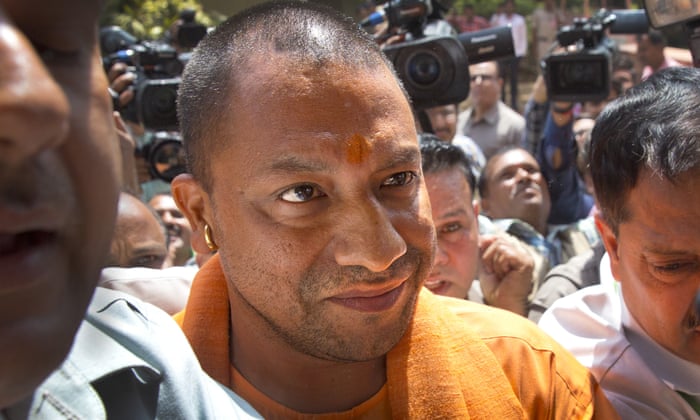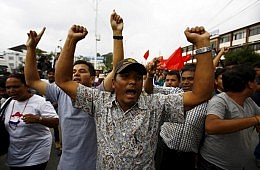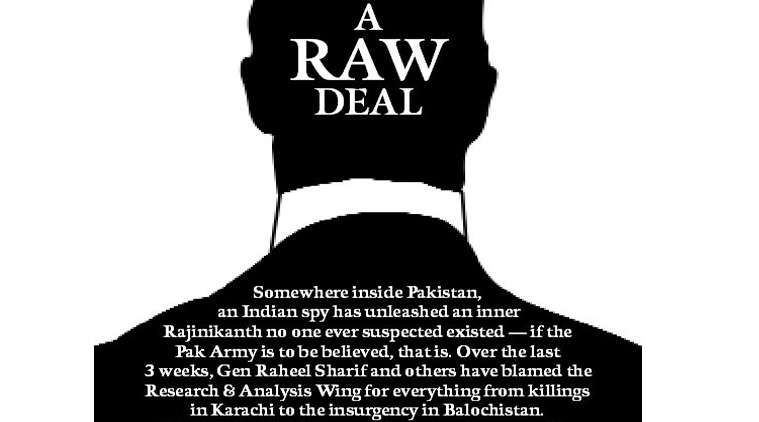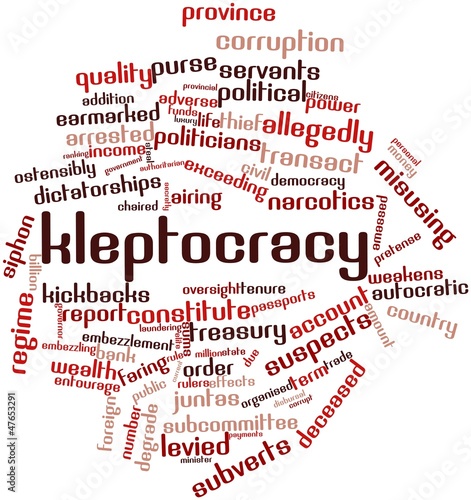Our Announcements
Sorry, but you are looking for something that isn't here.
Posted by Dr. Salman in India A Nuclear Danger to Humanity, INEPT, INEPT INDIAN NAVY, Shining India on January 20th, 2018

Indian nuclear scientists haven’t had an easy time of it over the past decade. Not only has the scientific community been plagued by “suicides,” unexplained deaths, and sabotage, but those incidents have gone mostly underreported in the country—diluting public interest and leaving the cases quickly cast off by police.
Last month, two high-ranking engineers—KK Josh and Abhish Shivam—on India’s first nuclear-powered submarine were found on railway tracks by workers. They were pulled from the line before a train could crush them but were already dead. No marks were found on the bodies, so it was clear they hadn’t been hit by a moving train, and reports allege they were poisoned elsewhere before being placed on the tracks to make the deaths look either accidental or like a suicide. The media and the Ministry of Defence, however, described the incident as a routine accident and didn’t investigate any further.
This is the latest in a long list of suspicious deaths. When nuclear scientist Lokanathan Mahalingam’s body turned up in June of 2009, it was palmed off as a suicide and largely ignored by the Indian media. However, Pakistani outlets, perhaps unsurprisingly, given relations between the two countries, kept the story going, noting how quick authorities were to label the death a suicide considering no note was left.
Five years earlier, in the same forest where Mahalingam’s body was eventually discovered, an armed group with sophisticated weaponry allegedly tried to abduct an official from India’s Nuclear Power Corporation (NPC). He, however, managed to escape. Another NPC employee, Ravi Mule, had been murdered weeks before, with police failing to “make any headway” into his case and effectively leaving his family to investigate the crime. A couple of years later, in April of 2011, when the body of former scientist Uma Rao was found, investigators ruled the death as a suicide, but family members contested the verdict, saying there had been no signs that Rao was suicidal.

This seems to be a recurring theme with deaths in the community. Madhav Nalapat, one of the few journalists in India giving the cases any real attention, has been in close contact with the families of the recently deceased scientists left on the train tracks. “There was absolutely no kind of depression or any family problems that would lead to suicide,” he told me over the phone.
If the deaths of those in the community aren’t classed as suicide, they’re generally labelled as “unexplained.” A good example is the case of M Iyer, who was found with internal haemorrhaging to his skull—possibly the result of a “kinky experiment,” according to a police officer. After a preliminary look-in, the police couldn’t work out how Iyer had suffered internal injuries while not displaying any cuts or bruises, and investigations fizzled out.
This label is essentially an admission of defeat on the police force’s part. Once the “unexplained” rubber stamp has been approved, government bodies don’t tend to task the authorities with investigating further. This may be a necessity due to the stark lack of evidence available at the scene of the deaths—a feature that some suggest could indicate the work of professional killers—but if this is the case, why not bring in better-trained detectives to investigate the cases? A spate of deaths in the nuclear scientific community would create a media storm and highly publicised police investigation in other countries, so why not India?
This inertia has led to great public dissatisfaction with the Indian police. “[The police] say it’s an unsolved murder, that’s all. Why doesn’t it go higher? Perhaps to a specialist investigations unit?” Madhav asked. “These people were working on the submarine program, creating a reactor, and have either ‘committed suicide’ or been murdered. It’s astonishing that this hasn’t been seen as suspicious.”
Perhaps, I suggested, this series of deaths is just the latest chapter in a long campaign aiming to derail India’s nuclear and technological capabilities. Madhav agreed, “There is a clear pattern of this type of activity going on,” he said.
-8edited.jpg)
INS Sindhurakshak (Photo via)
The explosions that sunk INS Sindhurakshak – a submarine docked in Mumbai – in August of this year could have been deliberate, according to unnamed intelligence sources. And some have alleged that the CIA was behind the sabotage of the Indian Space Research Organisation (ISRO).
Of course, the deaths have caused fear and tension among those currently working on India’s various nuclear projects. “[Whistleblowers] are getting scared of being involved in the nuclear industry in India,” Madhav relayed to me. Their “families are getting very nervous about this” and “many of them leave for foreign countries and get other jobs.”
There are parallels here with the numerous attacks on the Iranian nuclear scientist community. Five people associated with the country’s nuclear programme have been targeted in the same way: men on motorcycles sticking magnetic bombs on to their cars and detonating them as they drive off. However, the Iranian government are incredibly vocal in condemning these acts—blaming the US and Israel—and at least give the appearance that they are actively investigating.
The same cannot be said for the Indian government. “India is not making any noise about the whole thing,” Madhav explained. “People have just accepted the police version, [which describes these incidents] as normal kinds of death.”
If the deaths do, in fact, turn out to be premeditated murders, deciding who’s responsible is pure speculation at this point. Two authors have alleged that the US has dabbled in sabotaging the country’s technological efforts in the past; China is in a constant soft-power battle with India, and the volatile relationship with Pakistan makes the country a prime suspect. “It could be any of them,” Madhav said.
But the most pressing issue isn’t who might be behind the murders, but that the Indian government’s apathy is potentially putting their high-value staff at even greater risk. Currently, these scientists, who are crucial to the development of India’s nuclear programmes, whether for energy or security, have “absolutely no protection at all. Nothing, zero,” Madhav told me. “Which is amazing for people who are in a such a sensitive program.”
Posted by Dorab in Afghan -Taliban-India Axis, Bajrang Dal, Casteism in India-Alive & Thriving in Stealth Mode, CROSS BORDER KILLINGS BY INDIA, Gujarat Massacre By Narebdra Modi & Hindutva Terrorists RSS, Hindutva India Bigotry, India, India Global Exporter of Terrorism, India Hall of Shame, India in Pakistan's Nuclear Crosshair, INDIA'S DRDO DUDS, INDIA'S EXPORT- IT SCAMMER TO USA, INDIA'S HINDUISM, India's Nuclear Proliferation, Indian IT Coolies in US, Khalistan, Kulbhushan Spy, Makaar Dushman, Suppression of Women in Hindu India, The Hindutva Nazi Mind, VHP on January 8th, 2018

A disturbing and brutal video of Naveed Pathan murder could serve as evidence of the alleged Muslim genocide in India.
International social media is wrestling for truth in connection to the barbaric killing of Muslim bodybuilder Naveed Pathan, or as identified by India media and police, a gangster, rapist and murderer Rafiquddin Shaikh aka Guddya.
A disturbing CCTV footage, which leaked last Thursday, went viral in the past few days, with social media and state-run Indian media expressing diametrically opposite views on the gruesome murder of the victim, whose identity has been the subject of debate on the Internet.
In what could appear as an instance of the Indian media covering up the report of the brutal lynching of a Muslim man on Parola Road in Dhule district in the Hinduism-majority nation, international social media is grasping for any string of hope to reveal the truth about the barbaric video that shows 11 men hitting an unarmed Naveed Pathan with swords and sticks and continuing to hit his bloody body as the man lies unconscious.
Many Muslims in India – roughly 172 million people living in India identify themselves as adherents of Islam – woke up to the realization that a massive Muslim genocide may be underway in the nation populated by nearly 1.3 billion people, the majority of whom identify themselves as Hindu.
Something that may have been covered up by the Indian government for years became apparent the second the disturbing video of the barbaric murder of Naveed Pathan leaked on the Internet late last week. While the Indian police continue investigating who was the source of the leak, Muslims living in the nation are up in arms about the alleged religion-motivated murder and the apparent fact that the Indian media is trying to cover up the report to keep a lid on what has been labelled as a ‘genocide in India’.
The barbaric lynching of Naveed Pathan, or Rafiquddin as identified by the Indian media, comes just several weeks after local journalists and police allegedly turned a blind eye on another gruesome incident of public lynching of a Muslim teenager. Late last month, the media reported that 15-year-old Junaid was stabbed to death on a Mathura-bound train from New Delhi. A crowd of nearly 200 people – Hindus – pretended as if there was no murdered Muslim child in front of them, the media reported.
Social media erupted in anger in recent days, slamming the Indian media for allegedly spreading false propaganda to cover up the alleged killing of a Muslim man.
The unarmed victim, who on the video is seen lying in a river of his own blood after barbarically attacked by about a dozen of men equipped with swords and sticks, was identified by the Indian media and police as gangster Rafiquddin, who was murdered by an enemy gang in a gang-related attack.
But as the video started making rounds on the Internet, social media users were sceptical of the reports and accused the Indian media of trying to cover up what they called was a Muslim genocide in India. Many independent journalists identified the man as Naveed Pathan and described him as a law-abiding Muslim citizen who had been taking part in bodybuilding contests. They claim the Muslim man was murdered in a religion-motivated attack, not an inter-gang rivalry one.
The social media’s side of the story stands in stark contrast to the official Indian media reports, claiming that Rafiquddin was a criminal out on bail and had more than 30 cases of extortion, rape and murder against him. The Indian media downplayed the brutal lynching of the victim, who was killed in broad daylight in front of many witnesses and CCTV cameras, as gang rivalry.
The mysterious case of Naveed Pathan (Rafiquddin) remains unclosed, as Muslims living in India, who are concerned about their safety as religiously-motivated murders in the nation are reportedly on the rise, want an unbiased investigation into the barbaric killing of the alleged bodybuilder.
The disturbing video, which has been viewed by many social media users after its leak, shows that about 11 men pull the victim onto the street and strike him with swords and sticks 27 times. As Naveed Pathan (Rafiquddin), who was reportedly having tea in the nearby roadside stall, lies in his own river of blood dead, the attackers are seen hopping on motorcycles and scooters to flee the horrendous crime scene.
Indian police reportedly arrested one suspect in connection with the public lynching of the possibly wrongly identified Muslim bodybuilder. Reports also claim that police have identified another five suspects.
Zain Khan, a Dubai-based broadcast journalist, condemned the brutal attack and claimed that the Muslim man was targeted by Hindu extremists.
Many users have taken to social media to accuse the Indian government headed by PM Narendra Modi of ignoring and possibly covering up the increased number of religion-motivated incidents targeting Muslims across India.
While the identity of the brutally murdered victim still remains under wraps – with social media confident it was bodybuilder Naveed Pathan and the Indian media and police claiming it was gangster Rafiquddin – anti-Muslim sentiments are on the rise in the majority-Hindustan nation.

Opponents and critics of the Indian government claim that the current regime orders to keep media outlets silent about religious-motivated attacks targeting Muslims, while ordinary Indian people – as seen from the brutal lynching of the Muslim teenager last month – are apparently ready to turn a blind eye on such deplorable incidents and violation of human rights.
As the investigation into the murder of Naveed Pathan continues, Muslim people living in India fear that violence against Muslim community in the nation could become worse if the media, police and ordinary people keep their eyes closed on the disturbing reality.
This video may be inappropriate for some users. (GRAPHIC 18+)
https://www.youtube.com/watch?v=yc0Wjuh7kLM
Posted by Brave_Heart in Casteism in India-Alive & Thriving in Stealth Mode, HINDUISM CULT, Hindus Ignore Rape on December 13th, 2017
Has Caste Discrimination Followed Indians Overseas?
“One is of the opinion that you leave behind all the trappings of the caste system once you leave India, but perhaps I was naive.”
Saunvedan Aparanti, an Indian student studying in London, has found himself at the center of a heated campaign to introduce caste discrimination legislation in the United Kingdom. Having moved to Britain for university, Aparanti was surprised to find himself at the receiving end of “caste supremacy” from his new flatmates. The caste system he speaks of — and its trappings — is one that the world has, unfortunately, become familiar with. Stories relating to caste violence frequently emerge from some South Asian countries, particularly India, Pakistan, Sri Lanka, and Nepal. Headlines featuring the rape and murder of so-called “lower caste” people, or Dalits, are no longer rare.
Everyone is in agreement that this mistreatment of people based on an ancient social hierarchy is horrific and that it must be combatted. But when Indians say caste discrimination has followed them overseas, the solution doesn’t appear as straightforward anymore.

Across the UK, a fierce debate has been playing out within the British-Indian community over whether there is a need to introduce legislation for caste discrimination. In 2011, the employment tribunal heard its first claim of caste discrimination when a couple alleged they had been wrongfully dismissed by their employers because of their inter-caste marriage. Vijay Begraj claimed he was told by a “higher caste” colleague that he was lucky to be working in a law firm as his caste would have made him a cleaner in India. The tribunal also heard that Begraj had been assaulted by relatives of one of the firm’s partners and had been called derogatory caste names. The law firm in question, Heer Manak, denied the allegations until the case was ultimately abandoned in 2013.
Stories such as Begraj’s have united Dalit rights campaigners in the U.K. in the fight for caste law. Caste Watch UK, the Dalit Solidarity Network UK, and the Anti-Caste Discrimination Alliance are a few who have taken center stage in the campaign, with support from a number of academics. The United Nations has also lent a voice to the debate, urging the UK government to implement caste discrimination law.
Manifestations of Caste in the UK
So who is experiencing caste discrimination in the UK? And where and how are they experiencing it?
Numerous reports have been put together, each compiling a number of U.K.-based case studies of caste discrimination. Due to the stigma that comes along with being a “lower caste” person, many are afraid to speak out publicly. Instead, they choose to isolate themselves from the Indian community in the UK and live among non-Indians who have little understanding of caste dynamics.
Research conducted by the National Institute of Economic and Social Research and the Equality and Human Rights Commission has detailed various incidents of caste discrimination in the UK. The majority of these appear to occur in the personal sphere, which falls outside the reach of the Equality Act 2010, which relates to education, employment, and provision of goods and services. This has led some to question whether the implementation of caste under the Equality Act would do very much to combat instances of discrimination among social circles.
However, Dr. Meena Dhanda, a leading academic in diaspora Dalit studies, has noted that there is crossover between what happens in the private and public spheres. She argues that if prejudice exists, it cannot always be assumed that this prejudice does not cross over into the areas of employment and education.
Reena Jaisiah, a young woman of Dalit ancestry, illustrates how this crossover is possible. Her experience saw her become the victim of caste discrimination on the school playground, where students would bully her and call her derogatory names relating to her caste. This then carried on into her adult life, when she was running her shop and found that an elderly “upper caste” woman consistently refused to put money in her hand, instead placing it on the counter.
“That is exercising untouchability here in the U.K.,” Jaisiah said in Caste Aside, a documentary that sees her recount her life as a “lower caste” woman in Britain. Jaisiah’s experience doesn’t appear to be an isolated one, with caste rights groups such as the Dalit Solidarity Network UK and Caste Watch UK noting that they receive calls from people across Britain who say they too have become victims of caste discrimination.
“This is a rights issue that’s happening across South Asia,” said Meena Varma, director of Dalit Solidarity Network UK. “In fact it’s happening globally, because wherever the diaspora go, they take their caste with them, and so, therefore, that discrimination goes with them.”
Arguments Against Caste Legislation
However, not everyone in the British-Indian community believes that caste legislation is necessary in the U.K. The Hindu Council UK and the National Council of Hindu Temples UK have both opposed the calls for caste legislation, with politicians such as MP Bob Blackman backing them.
“Caste legislation simply doesn’t stand ground,” said Anil Bhanot, director of interfaith relations at the Hindu Council UK. “Dalits have become rich now here because there’s no discrimination.”
Bhanot goes on to note that the instances of caste discrimination that have been brought up so far relate to prejudice within social circles, rather than discrimination that would fall under the realm of equality law. He also argued that implementing this legislation will make caste more prominent among British-Indians, bringing awareness of caste where he says there is currently none.
Satish Sharma, general secretary of the National Council of Hindu Temples UK, takes a similar perspective on the legislation. When asked to characterize the Hindu community in the UK, Sharma commended the “harmonious” nature of the community and emphasized that the current generation of British-Hindus have been free from the understandings of the caste system and do not discriminate against each other in any way. He fears that this legislation, if implemented, will automatically presume certain members of the community — anyone who isn’t a Dalit — are “prejudiced by birth.” He strongly opposed this notion and restated his belief that caste is not an aspect of the Hindu religion. Instead, he argues, caste, as it exists today, is a Euro-Christian concept imposed on Indian people.
“Where does this notion that there is some sort of superiority being played out in the British-Hindu community come from?” Sharma questioned. “It’s purely an act of mischief. And if that isn’t a recipe for friction, then I don’t know what is.”
What Happens Next
On September 18, the British government ended a public consultation on caste and equality law in Great Britain, which invited the public to submit their views on “how to ensure that there is appropriate and proportionate legal protection” against caste discrimination. Groups on both sides of the debate rallied supporters to submit their thoughts on the issue.
Sat Pal Muman, Chairman of Caste Watch UK, has hit back at those opposing the legislation, saying: “They are afraid that if caste discrimination law does kick in, somehow it will affect their religion. They may have something to hide, there may be some skeletons in their cupboard.”
As the debate continues, campaigners are hoping that a decision will be made on the legislation in early 2018. Hindus groups remain concerned that bringing caste into U.K. law will send a message that caste is becoming a prominent feature in British-Indian society; something that they believe is far from true. Meanwhile, Dalit rights groups remain anxious about what will happen to the thousands of caste discrimination victims they say they know in the UK.
Future cohesion of the British-Indian community hangs in the balance as the UK government mulls its next move.
Priyanka Mogul is a freelance journalist based in London. She is the producer of Caste Aside, a documentary about the British government’s controversial decision to introduce legislation against caste discrimination in the U.K.


Posted by Dr. Salman in RAW-BlackOPS & Indian Media Lies on December 7th, 2017
On November 26, 2008, several persons were killed in the simultaneous terror attacks in Mumbai. Without any investigation, Indian high officials and media had started blaming Pakistan.
Mumbai attack was just another false flag operation of Indian establishment to gain sympathies of the world community and defame Pakistan in the comity of nations. The whole drama was staged to put blame Pakistan and its intelligence agency, Inter-Services Intelligence (ISI).
It is notable that renowned thinkers, Hobbes, Machiavelli and Morgenthau opine that sometimes, rulers act upon immoral activities like deceit, fraud and falsehood to fulfil their countries’ selfish aims. But such a sinister politics was replaced by new trends such as fair-dealings, reconciliation and economic development. Regrettably, India is still following past politics in the modern era.
Under the cover of the Mumbai catastrophe, India began a deliberate propaganda campaign against Pakistan and tried to isolate the latter in the comity of nations by showing that Islamabad was sponsoring terrorism in India. In this regard, Indian former Prime Minister Manmohan Singh and its other high officials, while repeating old rhetoric of baseless allegations, stated that Pakistan has “epicentre of terrorism” and Islamabad should “end infrastructure of terrorism.” L.K. Advani, leader of the BJP, while accusing Pakistan as the hotbed of terror in the region, said that Pakistan’s secret agency ISI should be declared a terror outfit.
In this respect, Indian top officials and TV channels had remarked that Indian Mujahideen and the banned Lashkar-e-Tayba (LeT) based in Pakistan and ISI were behind the Mumbai terror attacks. With the assistance of Indian secret agency RAW, Indian investigators fabricated a false story that 10 terrorists who executed Mumbai carnage came in a boat from Karachi and were in contact with the members of the banned Lashkar-e-Taiba through phone calls. But a number of questions arise in relation to the so-called links, deliberately entangling Pakistan. First, how it is possible that the militants phoned 100 times inside Pakistan, but they did not call their families? Second, the lonely gunman Ajmal Kasab who was arrested, knew his address and why he did not indicate the names and home addresses of other 9 fugitives with whom he lived for a long time? Third, after the hard journey of more than 50 hours, travelling on the slow-moving water, evading 20 coastal guards of Indian Navy, how they reached Mumbai? Fourth, where did they change their muddy shoes and wet dresses? Fifth, how it became possible that they immediately hired a taxi and reached their targets, without taking some rest? Sixth, why the terrorists killed only four people at the Nariman house, sparing the other six guys present there?

This Picture and Caption Appeared in Indian Express
A Guilty Conscience Pricks the India’s Mind
Availing the pretext of the Mumbai catastrophe, New Delhi had suspended the process of ‘composite dialogue’ in wake of its highly provocative actions like the mobilization of troops. Islamabad had also taken defensive steps to meet any Indian prospective aggression or surgical strikes. But, India failed in implementing its aggressive plans, because Pakistan also possesses atomic weapons.
However, in the post-Mumbai terror attacks, Indian rulers had started blackmailing Islamabad that they would not resume the talks unless Islamabad takes actions against the culprits of Mumbai mayhem. New Delhi urged Islamabad to arrest the perpetrators of the Mumbai terror attacks. Rejecting Pakistan’s stand that its government or any official agency was not involved in the Mumbai attacks, New Delhi wanted to make Islamabad accept all other Indian demands since our rulers admitted that Ajmal Kasab was a Pakistani national. In fact, Islamabad’s admission which had emboldened New Delhi was forced by the US. And, Ajmal Kasab was tortured by the Indian intelligence agencies so as to endorse Indian false story against Islamabad, while giving a statement in an Indian court. Suppose, even if he was Pakistani, it did not matter because he was a non-state actor, as non-state actors like smugglers and the militants are found in many countries.
It is of particular attention that on July 19, 2013, the Indian former home ministry and ex-investigating officer Satish Verma disclosed that terror attacks in Mumbai on November 26, 2008, and assault on Indian Parliament on January 12, 2001, were carried out by the Indian government to strengthen anti-terrorism laws.
It has clearly proved that Indian secret agencies; particularly RAW arranged coordinated terror attacks in Mumbai and orchestrated that drama only to defame Pakistan in the world, but also to fulfil a number of other sinister aims.
As a matter of fact, a lack of seriousness on India’s part to settle all disputes, especially Kashmir issue has compelled New Delhi to follow a self-contradictory and confused strategy towards Islamabad.
Hence, New Delhi earnestly found various pretexts to cancel peace talks while shifting the blame to Islamabad. For example, besides Mumbai attacks, in 2002, under the pretension of a terrorist attack on the Indian parliament, India postponed the dialogue process.
In this connection, on July 27, 2015, three gunmen dressed in army uniforms killed at least seven people, including three civilians and four policemen in the Indian district of Gurdaspur, Punjab.
Without any investigation, Indian high officials and media started accusing Pakistan, its banned militant outfits and intelligence agencies for the Gurdaspur incident. Indian Police remarked that the attackers are from Indian-held Kashmir, and some said that they were Sikh separatists, while Indian Punjab police chief claimed that the three gunmen were Muslim, but as yet unidentified. Contradicting speculations, India’s Home Minister Rajnath Singh told parliament that the gunmen came from Pakistan.
Khalistan Movement Chief Manmohan Singh stated that the Gurdaspur incident is “a conspiracy of Indian secret agency RAW to defame Pakistan.”
Besides, prior to the US President Obama’s second visit to New Delhi, Indian intelligence agencies orchestrated a boat drama to defame Pakistan, allegedly reporting that a Pakistani fishing boat as a Pakistan-based outfit group Lashkar-e-Taiba was intercepted by Indian Coast Guards, off the coast of Porbandar, Gujarat. And Indian Coast Guard crew set the boat on fire and it exploded. But, its reality exposed Indian terrorism, because, some Indian high officials admitted that there was no such boat which came from Pakistan.
Similarly, India orchestrated the drama of militants’ attack at Indian Air Force Base in Pathankot on January 2, 2016. Indian media and top civil and military officials started claiming that the attackers had arrived from Pakistani Punjab’s Bahawalpur district, and had links with Jaish-e-Mohammad and ISI. But, despite Islamabad’s cooperation with New Delhi like formation of the Joint Investigation Team (JIT) consisting of professionals to investigate the Pathankot attack, crackdown against the militant group Jaish-i-Mohammad—lodging of a First Information Report (FIR) in relation to the incident, India failed in providing any proof of Pakistan’s involvement in the Pathankot episode.
Indian authorities did not cooperate with Pakistan’s Joint Investigation Team which visited India to probe into Pathankot attack. The JIT members visited Pathankot Airbase on March 29 where Indian National Investigation Agency officials briefed and showed them the route from where the attackers stormed the airbase. In fact, besides fulfilling other sinister designs against Pakistan, New Delhi staged that drama to postpone secretary-level talks with Pakistan, which were scheduled to be held in Islamabad on January 15, 2016.
Sources said that the lights along the 24-km perimeter wall of the Pathankot airbase found to be faulty on the eve of the attack. The Pakistani investigators were allowed to enter the military airbase from the narrow adjacent routes instead of the main entrance and their duration of the visit was just 55 minutes, enough to take a mere walk through the airbase. The JIT could not collect evidence in this limited time. And the visiting team was only informed about the negligence of Border Security Force (BSF) and Indian forces. It was disclosed that at the time of the assault, the BSF was sleeping, even though they had been alerted to a possible attack 48 hours earlier.
India’s orchestrated drama of the Pathankot incident could also be judged from the fact that earlier, Indian Defence Minister Manohar Parrikar had stated in the confusion that New Delhi would not allow access to the JIT into the base, though it was allowed on a very limited scale to fulfil the formality. It can undermine the seriousness of bilateral commitments to find the truth.
Continuing false flag operations, on Setember18, 2016, India also staged the drama of the terror attack in the Indian Occupied Kashmir (IOK) at a military base in Uri, close to the Line of Control (LoC) with Pakistan.
Like the previous terrorism-related events, without any investigation, Indian media, civil and military high officials started blaming LeT and ISI, saying that the militants who target the Uri base came from Pakistan’s side of Azad Kashmir. In this regard, a senior Home Ministry official and a spokesman of the Indian army allegedly said, “It is clearly a case of cross-border terror attack…the militants infiltrated across the Line of Control from Pakistan before attacking the base in Uri.”
The situation developed in the aftermath of the Uri base terror assault like creation of Indian war hysteria against Pakistan, mobilization of troops near the LoC, exposure of the myth of Indian surgical strikes inside Azad Kashmir, differences between Indian Prime Minister Narendra Modi and Country’s Army Chief Gen. Dalbir Sing about the ‘fake video’ of this episode, criticism Modi government inside India, continuous violations at the LoC, targeting villages of Azad Kashmir etc., and diversion of attention from the new phase of uprising in the Indian held Kashmir where Indian security forces have martyred more than 100 innocent Kashmiris since July 8, 2016, who have been protesting against the martyrdom of the young Kashmir leader Burhan Wani by the Indian security forces in the Indian Occupied Kashmir (IOK) in wake of continued sieges and prolonged curfew have clearly proved that with the help of Indian intelligence agencies, especially RAW, India has itself arranged the Uri base assault not only to defame Pakistan abroad but also to achieve a number of sinister designs.
Nevertheless, all these terror attacks were planned by Indian security agencies to distort the image of Pakistan and its primary intelligence agency, ISI, linking it with the banned group Lashkar-e-Taiba. In these terms, coordinated terror assaults of November 26, 2008, in Mumbai were part of the same Indian scheme.
Sajjad Shaukat writes on international affairs and is author of the book: The US vs Islamic Militants, Invisible Balance of Power: Dangerous Shift in International Relations
Email: [email protected]
Posted by Dorab in Asif Zardari Crook Par Excellance, Bajrang Dal, CROSS BORDER KILLINGS BY INDIA, India Global Exporter of Terrorism, India Hall of Shame, India's Spies Terrorism in Pakistan, India-Genesis of ISIS, Indian Army, ISHAQ DAR:THIEF OF PUNJAB, KASHMIRI NAWAZ SHARIF & PMLN MNA/MPA KANJAR KHANA, Kulbhushan Spy, NAWAZ SHARIF & PROSTITUTES, NAWAZ SHARIF BUZDIL KARGIL BHAGHORA, NAWAZ SHARIF US CIA ASSET IN PAKISTAN, Nawaz Sharif Womanizer, Nawaz Sharif-The Prime Minister from Hell, Pakistan's Hall of Shame, Scams & Frauds Under Crooked Govts, Tax Choor Ministers & Nawaz Sharif, The Hindutva Nazi Mind, Thieves of PMLN & PPP on July 25th, 2017
THUG LIFE IN THE IDIOTS REPUBLIC AN EYE OPENER

Every single state enterprise being run by this country’s immoral, shameless , corrupt, complicit bureaucrats are inefficient and loss making to the point of being redundant.